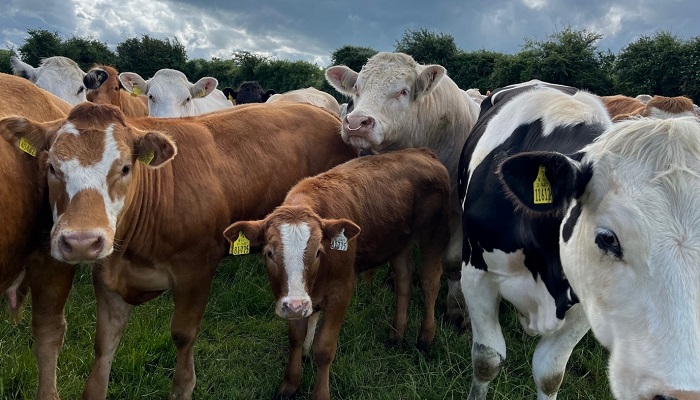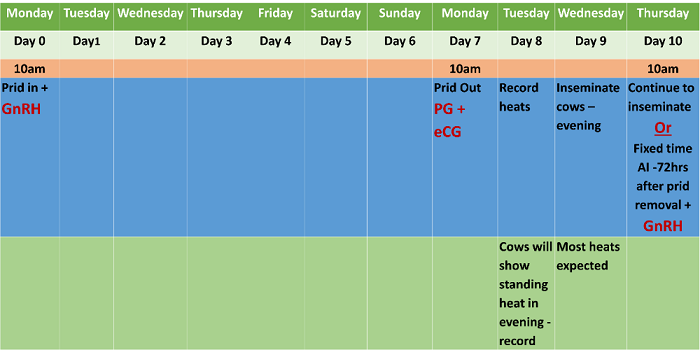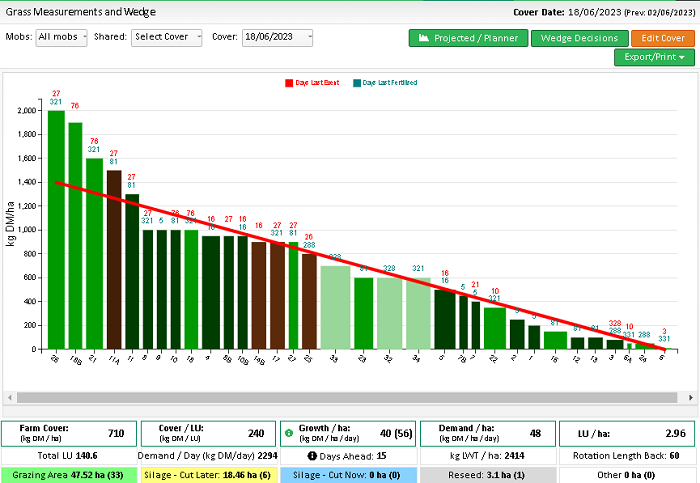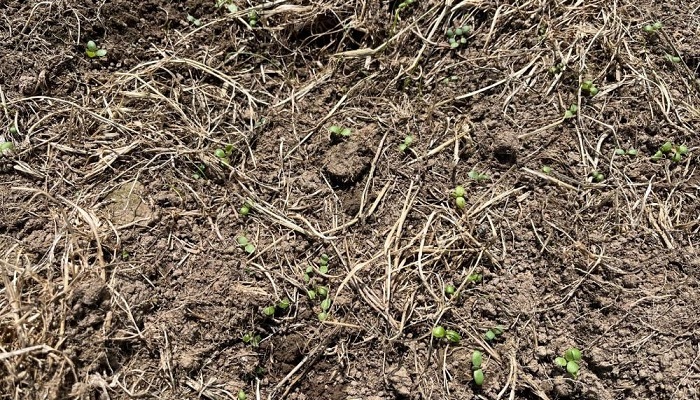05 July 2023
Counting down to the end of breeding with Future Beef Farmer John Barry

Farming in Nenagh, Co. Tipperary, the breeding season commenced on John Barry’s farm on April 29th and will continue until mid-July. Aisling Molloy, Future Beef Programme Advisor to the farm, provides an update on its progress.
This year, John is targeting a breeding season length of less than 12 weeks for his spring-calving herd; the last serve date will be July 22nd. For the first seven weeks of the breeding season, heifers and cows were served using AI. John purchased a Holstein Friesian cross bull, which was vasectomised on the farm, to help with heat detection. A Charolais stock bull (pictured above) has since been let out with the herd and will remain for the rest of the breeding season.
The breeding season, John found, was slow to start and the poor weather in April affected the quality of heats observed. As a result, he decided to inject 12 with prostaglandin, which resulted in five being served over the following days. A further five cows were synchronised using a CIDR and four were artificially inseminated when signs of heat were observed after this.
These cows were >35 days calved, in good body condition score (>2.5) and were on a good plane of nutrition at the time of breeding and for four weeks after (i.e. good quality grass). He currently has 45 females artificially inseminated and five late calvers are due to cycle after calving.
Figure 1: Recommended cow synchronisation protocol

(GnRH: Receptal, Ovarelin / PG: Estrumate, Lutalyse, Enzaprost / ecG: Folligon PMSG, Synchrostim)
John picked mainly terminal AI bulls to use on the herd this spring, such as BB8019 and CH5932. He also is using SI4147 and ZEP (for heifers), which are good maternal bulls. He is also trying out sexed semen on his most maternal and earliest-calving cows this year to try and breed more replacements from within his herd.
In the autumn herd, 26 out of 32 cows were scanned in calf after 10 weeks of a breeding – running from November 2nd to January 9th – resulting in an 81% conception rate. John has bought in five in-calf heifers to calve 31 females in the autumn.
Grassland
John measured grass on his farm on June 18th. The growth rate since June 2nd was 40kg DM/ha/day and the demand was 48kg DM/ha/day. However, he had an average farm cover of 710kg DM/ha, which is on target for the time of year. He also had 15 days of grass ahead, which is close to the target of 12-14 days. After the rain arrived on the farm, it is expected that 23 units of nitrogen per acre will be mineralised from the soil and John has seen growth visually increase since. On June 13th, he spread 20 units of 24-0-5 +4S to boost grass growth in the paddocks.
Figure 2: Grass wedge on June 18th 2023

Main crop silage and surplus paddocks were cut on the farm between May 22nd and June 15th from 13 fields. The silage from the out block was put into the silage pit and bales were made from other fields, which John marked so that he can identify the best quality ones over winter. 75 bales of hay were also made.
Clover
A red clover mix was sown on June 9th at a rate of 15kg/ac. This was sown in a silage field on his out block that is index 4 for phosphorous (P) and index 2 for potassium (K). The pH from the original soil sample in 2022 was 5.5, but John spread 2.5 t/ac of lime on it last August and expects that it rose the soil pH to 6.2. It will receive a further 2t/ac of lime this summer to increase the soil pH to 6.8, which will be above the target pH of 6.2.

Red clover seedlings appearing
The field was sprayed off 12 days before it was cut for hay. John’s contractor sowed the mix with a one-pass before rain was forecast and the field was rolled afterwards. It received 50kg/ac of 0-7-30 and farmyard manure was applied to boost the K indexes. Seedlings are appearing across the field already. The mix contained 2.5kg of Aberclyde PRG, 2.5kg of Barwave PRG, 2.5kg Aberwolf PRG, 4kg Rozeta red clover and 0.5kg Alice white clover.
For more information on John Barry’s farm, visit the Future Beef Programme webpage.
Also read: When are you going to ‘pull your bull’?
